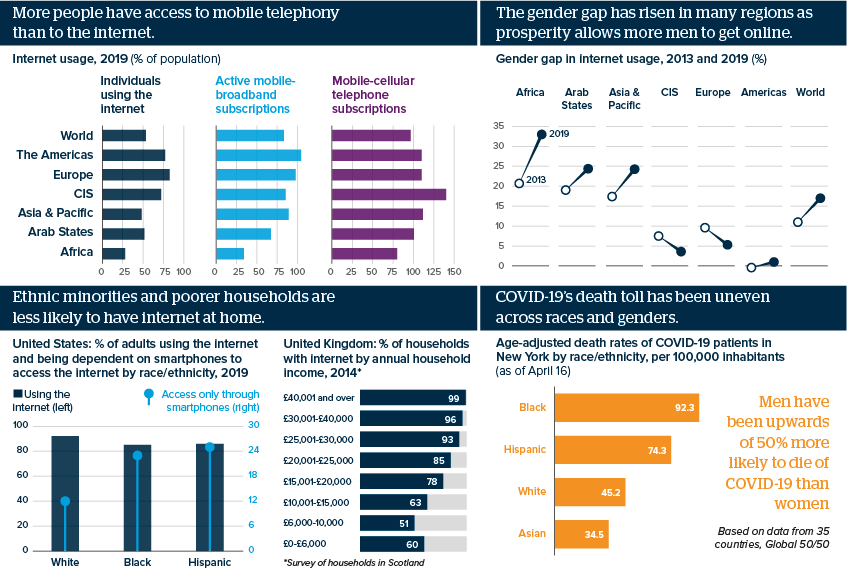Pandemic deepens impact of global technological gaps
Although internet use is rising, serious access gaps persist across regions, gender and ethnic groups
Source: ITU World Telecommunication; Pew Research Centre; Carnegie Trust; New York City Government
Outlook
Some degree of social distancing will continue pending new drugs, and the COVID-19 pandemic may not be eradicated for years, if at all. These realities will accelerate global use of the internet: for delivering essential services, economic activity, education and communication. This will impede the near-term recovery of technologically disadvantaged regions and social groups, as well as their longer-term readjustment to a new normal.
The ability of developing countries to expand digital access rapidly will be hindered by strained public finances. Women seem less likely than men to die of COVID-19, but like ethnic minorities, they are less likely to have broadband access at home to make full use of digital opportunities, and are disproportionately concentrated in lower-paid health and education sectors that require in-person contact.
Impacts
- Essential communication on health issues via mobile texts would have the widest reach given the ubiquity of the technology.
- Women’s economic recovery from the pandemic is likely to take longer than men’s in critical areas such as employment, wages and education.
- The development of gender- and minority-friendly recovery plans will continue to be slow and regionally uneven.
See also
- Recession risks wider internet infrastructure gap - Jul 7, 2020
- Pandemic will widen major gender gaps - Apr 30, 2020
- COVID-19 poses a huge challenge to developing nations - Apr 8, 2020
- More graphic analysis
